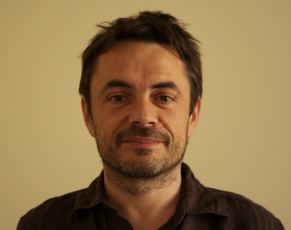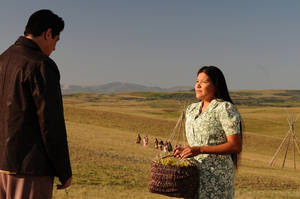Director of photography Stéphane Fontaine, AFC, discusses his work on “Jimmy P.”, by Arnaud Desplechin
Synopsis : After the Second World War, Jimmy Picard, an American Indian veteran from the Blackfoot Tribe, has been admitted to the Winter Veteran Hospital in Topeka, Kansas. He has become an alcoholic, suffers from headaches and absentmindedness that no doctor is able to explain. He enters the care of Georges Devereux, a French psychoanalyst and ethnologist specialized in American Indian cultures, who is of Hungarian descent.
How was preparation with Arnaud Desplechin ?
Stéphane Fontaine : Preparation began two years ago and then production stopped. Arnaud had done a lot of iconographic and cinematographic research. This film was based on a true story that happened during the 40s. One hour daily therapy sessions had taken place between this Indian and an analyst who would transcribe each of their meetings afterwards. A 600-page book entitled Psychotherapy of a Plains Indian, written by Georges Devereux, was published. It bears witness to one of the few analyses that we have access to in such detail. During preparation, Arnaud and I had already done a lot of storyboarding. As to the cinematographic references, Bergman and Truffaut were never very far from our minds.
How did you construct the film’s image, were your intentions as to lighting well-defined in advance ?
SF : Yes, pretty well defined, but not to the point where it was forced. What is difficult is to give a narrative intention to repetitive things. In this case, there were many dialogues between two seated men. So, how can you try to make something visually interesting happen without detracting from the interest of the dialogue itself ? Each of their sessions had a pre-defined intention and a rather precise cartography, but of course, this all changed and developed during shooting.
Why did you choose to film using 35mm film ?
SF : It’s funny : two years ago, everyone asked : “Why are you filming in digital ?” and now everyone asks : “Why are you filming in 35mm ?” We just felt like filming in 35mm ! Experienced eyes like ours forget how different 35mm film is from digital and how it is a hundred times richer than digital cinema. When you look at a digital image, you say : “Oh yes, that’s nice, that’s really nice !,” but then when you see a 35mm image, you immediately notice that the range of colour tone and skin tone are totally different… not just on faces, but nature, a piece of wallpaper or fabric, are so much finer and more precise.
The only inconvenient part of 35mm is having to deal with X-ray machines. We were shooting near Detroit and the dailies travelled by air to be developed in New York. An entire day-and-a-half of filming went through the X-ray machine and we had a hard time getting back on track ! They were restored by Mikros, who did a rather fine job of it, but some of the scenes lost a bit of their shine.
Weren’t you able to re-shoot those shots ?
SF : No, we had a really full shooting schedule, and a very short amount of time to do it all. Because it happened at the end of our time in Detroit, it would have been really hard to reshoot those scenes.
Did you have a lot of light for the hospital scenes ?
SF : Yes and no. There was a lot of space, and most of the sets were in a giant early 20th century building with lots of different rooms and hallways. We filmed in four or five different places per day and they all had to be ready at the same time. Our equipment was therefore spread out all over the place.
A different lighting for each place ?
SF : Yes, either very realistic or a little more sophisticated.
We had 30 days of shooting for about 140 scenes. Everyone had to move really fast, the director and the actors alike. Preparation was extremely important for us because once the camera was on, everyone had to move smoothly and rapidly.
Did you edit each of their interviews differently ?
SF : Yes, each of their meetings was precisely edited because it is hard to film two seated people talking to each other. We wanted to give each of their meetings its own dynamic. Each session was filmed and lit differently. Two cameras were used simultaneously for half of the film.
Did you use the second camera for counter shots or to remain within the same axis ?
SF : For counter shots or to set each one to a different angle, profile or gestures. That is also why we chose two Arricams, even though I prefer the Penelope ; but we needed 300 meters magazines in order to reload both at the same time without interrupting filming.
During colour grading, did you change your visual intentions ?
SF : I like when the intention is already on the negative. Because that is my principle, it is difficult to change your direction during colour grading. You can immediately see it : the grain isn’t right, the colour is off, etc.
(Interview conducted by Brigitte Barbier for the AFC and translated from French by Alex Raiffe)
 En
En Fr
Fr





